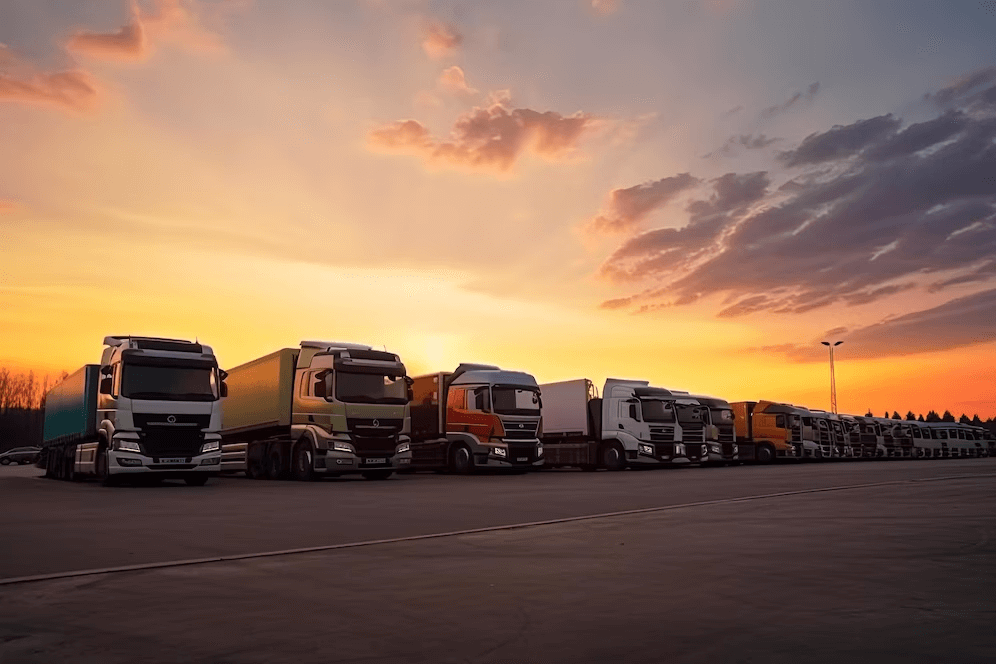The trucking industry remains one of the most vital parts of the modern global economy, its veins carrying the goods that keep the world’s economies alive.
While engaging in a journey through the hurdles and twists of the 21st century, we witness freight and logistics development at an unparalleled rate.
From self-driving cars and AI-based analysis to e-commerce presence and sustainability efforts, every shift redesigns the flow of goods.
This article focuses on the critical trends emerging in the transportation industry, particularly the truck industry, which demonstrates the ability to overcome every emerging trend in the global market.
1. Technological Advancements
The whole transport industry is being revolutionized through technology with enhanced efficiency, safety, and sustainability. Perhaps the largest of the headlines that affect the trucking news is the invention of self-driving cars.
Fully driverless transportation is still a work in progress. However, higher-level autonomous vehicles, including self-driving trucks, are on the road today, and improved ADAS systems make the job safer and less tiring for the human driver.
Telematics and IoT devices are also changing the face of logistics organizations by providing visibility into vehicle productivity, driver behavior, and product conditions. Therefore, this data can be used to manage fleets in general, save on the expenses connected with fuel, and plan optimal routes.
2. E-Commerce Boom
There is a significant escalation in the aspects of logistics and freight because of e-commerce. Today’s customers require perfect tracking of their shipment whereabouts and faster delivery schedules.
This demand has forced a higher reliance on trucks for last-mile deliveries, which is the movement of products from distribution centers to the end users’ homes or offices.
Expansion of fleet size, increased warehousing space and the implementation of technology-based logistics strategies are among the measures that trucking companies are employing to meet the demand of online retailers.
3. Environmental Sustainability
Environmental conservation is one of the biggest challenges that the transportation business is grappling with currently.
There is a growing trend to adopt strategies to minimize the negative impact of logistics exercises as transport is among the leading contributors to the carbon footprint.
Hydrogen fuel cells and electric-powered vehicles are some of the most common investments in commercial undertakings amongst trucking firms.
Besides, efforts to reduce empty miles and optimize route planning have recently emerged. There are new environmentally friendly developments in transport through partnerships with truck manufacturers, logistics, and the law.

4. Regulatory Landscape
The trucking sector on the other hand most of the time depends on changes in rules and legislation which may encompass areas such as emissions, the working hours of the drivers amongst other aspects of the car.
Rules like Hours of Service (HOS) and Electronic Logging Devices (ELD) improve drivers’ safety and compliance with regulations.
The current exemplary policies in sustainable transportation include Japan policy on the use of zero emission vehicles and the European union standard policy on CO2 emissions for trucks.
Such data imply that specific requirements influence the plans of fleet management and the costs of operating the fleets.
5. Driver Shortages and Workforce Challenges
The never-ending and even tedious process of making a constant supply of well-qualified drivers in the trucking industry is one of the biggest hurdles.
One of the primary concerns is the absence of a workforce because the presence of drivers is a problem in many areas since age increases, regulations are restrictive, and the job is demanding.
In this regard, challenges are making it difficult for trucking businesses to seek ways of testing new talent and enhancing the working environment for youths.
6. Supply Chain Resilience
Business continuity supply chains remain essential, especially during such events as the COVID-19 outbreak. New efforts to develop a more adaptive network have stemmed from disruptions within supply chains that exposed weaknesses of these structures.
Trucking businesses’ approaches to reduce risks are investing in tools to shield them from disruptions, expanding the supplier network, and improving inventory management.
With respect to the changes in the markets and geopolitical situations, the network of cooperation at various levels of producers and retailers is constantly growing.
7. Integration of Artificial Intelligence and Big Data
Through the provision of predictive analytics and more significant insights into operations, Artificial Intelligence (AI) and Big Data are transforming the transportation business.
AI-driven algorithms analyze big data on various topics, such as past routes, weather trends, traffic, and vehicle performance indicators.
Trucking firms may increase overall operating efficiency, foresee repair needs, and optimize fleet management in real-time using these insights.
Reliability and customer satisfaction are increased by predictive maintenance, which also heavily relies on AI to assist in avoiding problems and limit downtime.
Conclusion
These developments highlight a dynamic sector that is changing as we look to the future of transportation. The freight and logistics industry are changing due to labor demographics, technological advancements, environmental sustainability, and regulatory changes.
For trucking firms hoping to prosper in an increasingly connected and cutthroat global market, embracing these developments with agility and foresight will be essential.
The trucking industry’s tenacity and flexibility will be necessary for the smooth flow of commodities and the health of economies throughout the globe as time goes on.








